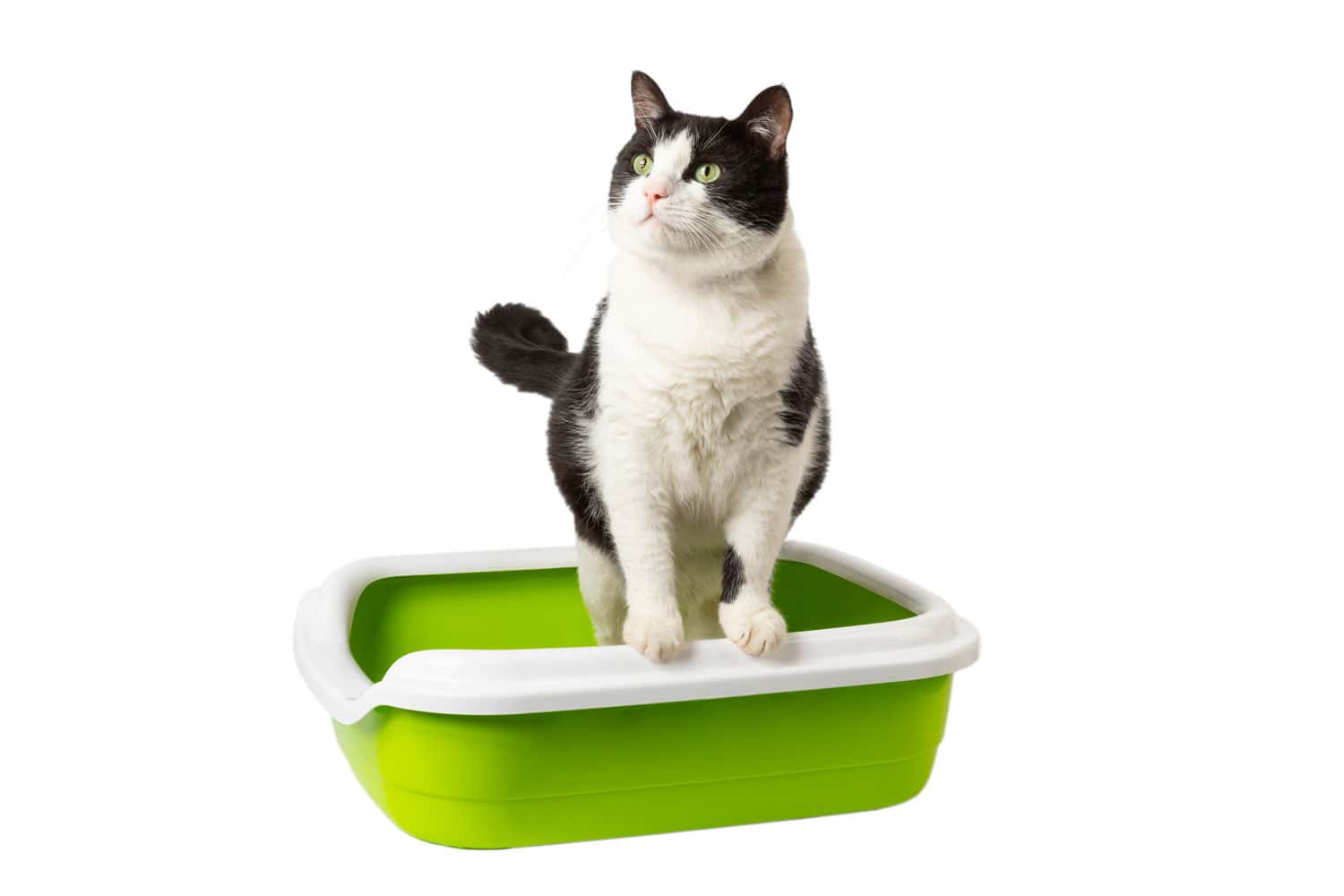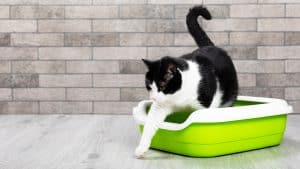If your cat stands on the edge of the litter box to poop, you may wonder about this quirky potty posture.
What causes a cat to stand on the edge of the litter box to poop? Is it simply an odd feline preference, or could it signal an underlying health issue?

Cats are delightful enigmas with distinct behaviors that often surprise us. While this perching posture seems unusual, several possible explanations exist.
Certain reasons are harmless feline quirks, while others may require veterinary attention.
By understanding the potential causes and knowing when to consult your vet, you can better address your cat's litter box perching habit.
This article explores the possible reasons for this behavior, warning signs not to ignore, and some gentle training alternatives to consider. Get insight into why your cat assumes this position and when it warrants a trip to the vet.
Reasons For Litter Box Perching
There are several possible reasons for this litter box perching behavior:
1. The litter box is too small
Maybe their fluffy rear end doesn't fit fully inside the pan?
Try a wider, uncovered box. That could help!
Click here to see wide litter boxes on Amazon.
2. Dislikes the litter texture
Cats are picky!
Rough or uncomfortable litter on their paws may cause them to keep their back feet out. Why not try different litter types?
Also read: How To Clean The Litter Scoop
3. Avoiding messy paws
Standing on the edge keeps their paws cleaner from loose litter scattering.
You can add any durable mat under the box.
4. Prevent soiled fur
Keeping their hind end outside the box means less kicking up litter onto their coat.
5. High box walls
Older or arthritic cats may struggle to climb in, so perch on the edge instead.
Consider lowering walls or cutting out a side.
Click here to see low-walled litterboxes on Amazon.
6. Comfort preference
Some cats find this stance more comfortable and have adopted it as a habit.
It may just be a quirk if there is no pain or problems!
Red Flags: When to Consult the Vet for Your Cat
In certain instances, standing on the edge of the litter box might signify an underlying issue that requires prompt veterinary attention.
If your cat shows any of the following accompanying symptoms, it's crucial to consult your veterinarian without delay:
1. Difficulty or Pain While Urinating or Defecating
A veterinarian should examine cats that appear to struggle or experience discomfort while urinating or defecating.
This behavior could indicate a urinary tract infection, bladder stones, or other health issues requiring professional assessment and treatment.
2. Excessive Straining in the Box
Excessive straining or spending extended time in the litter box might indicate constipation or other gastrointestinal problems.
Seeking veterinary care can help diagnose and address the root cause of this behavior.
3. Presence of Blood in Urine or Stool
The sight of blood in your cat's urine or stool should never be ignored.
It could signal various issues, including infections, inflammation, or even more serious conditions.
A veterinary examination is crucial to determine the source of the bleeding and provide appropriate care.
4. Eliminating Outside the Box
If your cat starts avoiding the litter box and chooses to eliminate it in other areas of your home, it's a cause for concern.
This behavior shift could point to underlying problems, such as urinary tract issues, stress, or behavioral changes.
A veterinarian can help identify the underlying cause and guide you toward effective solutions.
Training Alternatives
If you'd like to help your furry companion adopt a different potty posture, here are some friendly training suggestions to consider:
1. Positive Reinforcement Training
Positive reinforcement training is a proven and gentle approach to encouraging desired cat behaviors.
To address your cat's perching behavior, try the following techniques:
Treat Rewards
Reward your cat with treats each time they display the desired behavior of keeping all four paws inside the litter box.
This positive association can motivate your cat to adopt the correct posture.
Also read 7 Litter Box Cleaning Hacks That Will Make You Go “Wow!”
Praise and Affection
Verbal praise and affectionate gestures can work wonders.
Whenever your cat uses the litter box with the preferred posture, offer enthusiastic praise to reinforce the behavior.
Strategic Luring
Place a favorite treat or enticing toy inside the litter box to attract your cat's interest.
The lure of the treat can encourage them to explore the box while maintaining the appropriate posture.
2. Selective Attention
Cats thrive on attention, whether positive or negative.
Ignoring instances of perching and redirecting your attention when your cat displays the desired posture can help discourage the undesired behavior without reinforcing it.
Also read: When to Start Litter Box Training Kittens?
3. Embrace Individuality
It's important to recognize that while some behaviors can be shaped through training, others are simply part of your cat's unique personality.
If the perching behavior isn't causing any issues or discomfort, consider embracing it as one of the charming quirks that make your cat special.
4. Patience and Understanding
Training takes time and patience.
Cats may take a while to adjust to new behaviors, so be consistent and understanding throughout the process.
Remember, every cat is different, and the effectiveness of these training alternatives may vary.
With patience, you can reshape their potty posture.
But if not causing problems, embrace your cat's unique way of pooping!
Your Cat's Quirky Litter Box Behaviors
Cats keep us guessing with their unique and sometimes confounding litter box habits. While a cat perching on the edge of the litter box to poop may seem peculiar, it often arises from harmless preferences or minor issues like box size.
However, abrupt behavior changes or accompanying symptoms warrant a veterinary visit to assess your cat's health.
Address concerns early before they become significant problems.
Understanding the common reasons behind quirky litter box behaviors empowers you to respond appropriately.
With patience and care, you can either resolve minor issues or embrace the endearing eccentricities that make your cat one of a kind.
Remember to see the vet promptly if you notice any concerning symptoms. Otherwise, have fun unraveling the mysteries of your cat's entertaining washroom rituals!





